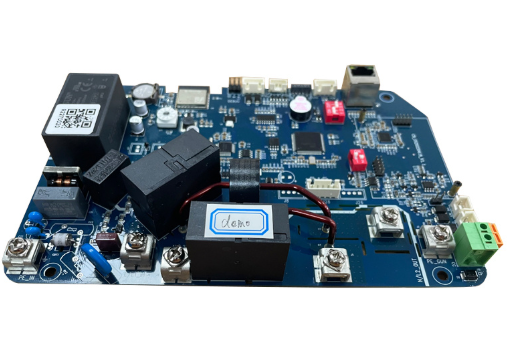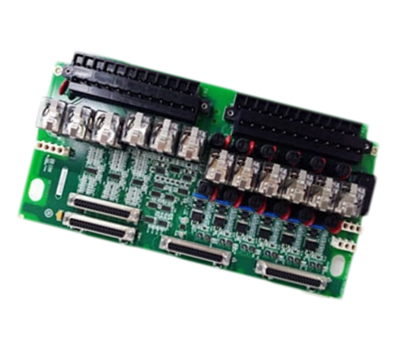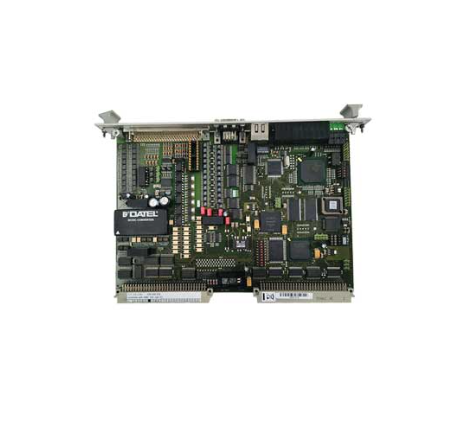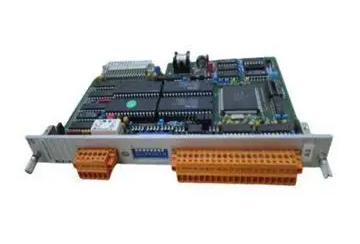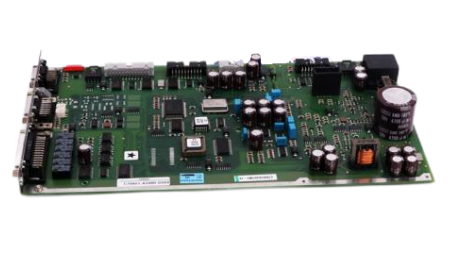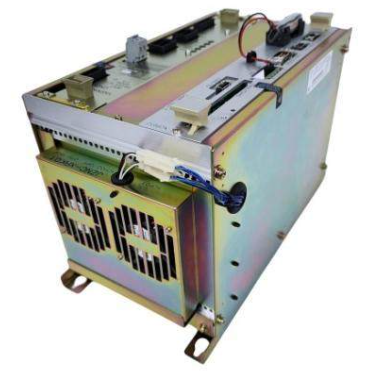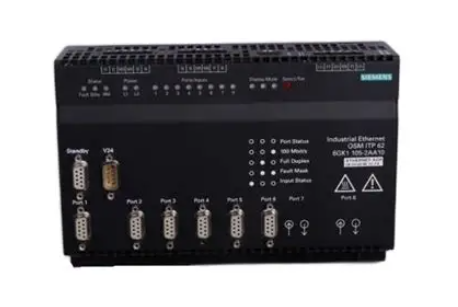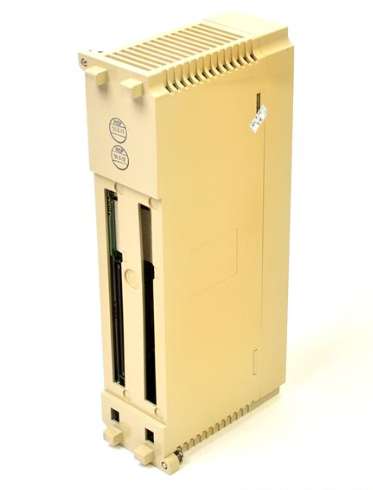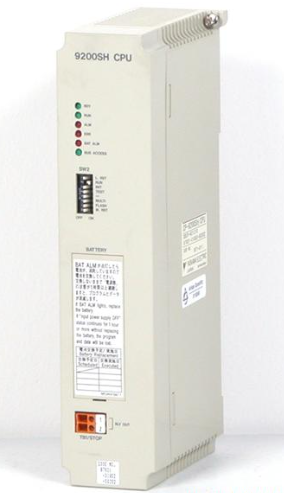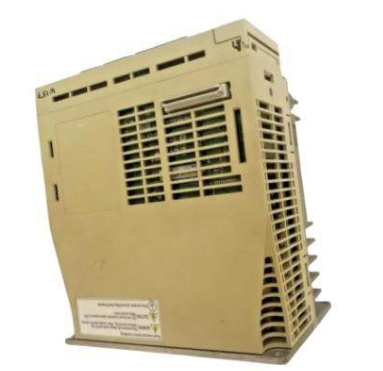ABB Automatic Transfer Switch OTM_C_21D
Easy to install and maintain: Screw and DIN rail mounting options are available, with clear mounting dimensions. For maintenance, it is recommended to carry out a switching test every 3 months to ensure reliability, and detailed fault analyses and solutions are provided for common faults.
ABB Automatic Transfer Switch OTM_C_21D
Product Overview
Product Features and Packaging: Can be used for power conversion in three-phase or single-phase networks, capable of monitoring a wide range of power supply anomalies, with a variety of operating modes and communication features. The standard package includes an automatic transfer switch, handle, handle storage clip, terminal plugs and mounting kit.
Switching sequence: there are different switching sequences in different operation modes. in line 1 priority mode, the generator is started when LN1 is abnormal (if this mode is selected), and then switched by transfer delay when LN2 is normal; after LN1 is back to normal, it is switched by return delay and the generator is stopped. in no line priority mode, it is switched by transfer delay when LN1 is abnormal, and then switched by return delay when LN2 is abnormal, and then switched by transfer delay when LN2 is abnormal. In No line priority mode, LN1 abnormalities are switched by transfer delay, LN2 abnormalities are switched by return delay, and the generator cannot be used in this mode. manual return mode mode, LN1 abnormalities are switched similar to Line 1 Priority mode, and the generator has to be manually switched back after LN1 recovers to normal.
Quick start
Manual operation: Install the handle to the switch panel, the switch enters the manual mode, at this time the automatic operation function is disabled. Before operation, manually confirm that the switch is functioning normally. When the handle is not inserted and there is no EMRG OFF signal, the switch enters the automatic mode and switches to the main line after power is applied.
Automatic operation: Make sure the switch is in automatic mode and the ‘AUTO’ LED is on. If the handle is inserted, remove the handle before pressing the ‘AUTO’ button; if the handle is not inserted, press the ‘AUTO’ button when the ‘AUTO’ LED is flashing. If the handle is not inserted, press the ‘AUTO’ button when the ‘AUTO’ LED flashes. There are three modes of automatic operation: Line 1 priority, No line priority and manual return mode.
SYSTEM TEST: Local test in auto mode, switch by I, O and II buttons on the panel, press ‘AUTO’ button to return to auto operation. Remote test requires connecting the remote test signal, making sure the switch is in auto mode, short-circuiting the test signal for at least 100ms so that the ‘AUTO’ LED flashes to enter the test mode, and then returning to the auto mode automatically after the test is finished.
Lockout Function: Includes lockout for electrical and manual operation. The electrical operation can be locked with a padlock in any position, disabling all operating modes and test operations, and the handle cannot be inserted. Manual operation can only be locked in position 0 by default, which is achieved by pulling the clip on the handle and padlocking the padlock.
Modbus Communication Function: Communication is achieved via an optional external Modbus RTU module. Modbus parameters, function codes and register information are introduced, and it is emphasised that parameter configuration and ATS control functions can only be carried out in remote control mode, and that after remote control, it is necessary to reset to local monitoring mode before returning to automatic operation mode. Meanwhile, users are reminded to pay attention to network security and take measures to protect the product and network security.
Use of symbols
Risk of Electric shock: warns about a situation where a hazardous voltage may cause physical injury to a person or damage to equipment.
General warning: warns about a situation where something other than electrical equip-
ment may cause physical injury to a person or damage to equipment.
Caution: provides important information or warns about a situation that may have a detri mental effect on equipment.
Information: provides important information about the equipment.
Technical Data
Voltage-related data
Rated working voltage: 220 - 240V AC at 50 - 60Hz for single-phase (2P); 380/400/415V for three-phase (3P/4P) This indicates that the switch can be applied to common single-phase and three-phase AC power systems to meet different power demand scenarios.
Operating voltage range: 0.7 - 1.3Ue, which means that the switch can work normally in the range of 70% - 130% of the rated voltage, and has a certain degree of voltage adaptability to cope with some voltage fluctuations.
Rated impulse withstand voltage: 8 kV overall, 6 kV for the control circuit (disconnection of the control circuit power supply line is required before performing the dielectric withstand voltage test). This data reflects the ability of the switch to withstand instantaneous high voltage shocks,
ensuring safety and stability in the event of some sudden voltage changes.
Frequency-related data: The frequency of 50 Hz/60 Hz indicates that the switch is suitable for these two common AC power frequencies and can be used in power systems with different frequencies.
Other technical data
Measuring accuracy: ±3%, reflecting the switch's accuracy in monitoring voltage and other parameters, which ensures accurate judgement of the power supply state and provides a reliable basis for switching operations.
- EMERSON
- Honeywell
- CTI
- Rolls-Royce
- General Electric
- Woodward
- Yaskawa
- xYCOM
- Motorola
- Siemens
- Rockwell
- ABB
- B&R
- HIMA
- Construction site
- electricity
- Automobile market
- PLC
- DCS
- Motor drivers
- VSD
- Implications
- cement
- CO2
- CEM
- methane
- Artificial intelligence
- Titanic
- Solar energy
- Hydrogen fuel cell
- Hydrogen and fuel cells
- Hydrogen and oxygen fuel cells
- tyre
- Chemical fiber
- dynamo
- corpuscle
- Pulp and paper
- printing
- fossil
- FANUC
- Food and beverage
- Life science
- Sewage treatment
- Personal care
- electricity
- boats
- infrastructure
- Automobile industry
- metallurgy
- Nuclear power generation
- Geothermal power generation
- Water and wastewater
- Infrastructure construction
- Mine hazard
- steel
- papermaking
- Natural gas industry
- Infrastructure construction
- Power and energy
- Rubber and plastic
- Renewable energy
- pharmacy
- mining
- Plastic industry
- Schneider
- Kongsberg
- NI
- Wind energy
- International petroleum
- International new energy network
- gas
- WATLOW
- ProSoft
- SEW
- wind
- ADVANCED
- Reliance
- YOKOGAWA
- TRICONEX
- FOXBORO
- METSO
- MAN
- Advantest
- ADVANCED
- ALSTOM
- Control Wave
- AB
- AMAT
- STUDER
- KONGSBERG
- MOTOROLA
- DANAHER MOTION
- Bently
- Galil
- EATON
- MOLEX
- Triconex
- DEIF
- B&W
- ZYGO
- Aerotech
- DANFOSS
- KOLLMORGEN
- Beijer
- Endress+Hauser
- MOOG
- KB
- Moxa
- Rexroth
- YAMAHA
- Johnson
- Westinghouse
- WAGO
- TOSHIBA
- TEKTRONIX
- BENDER
- BMCM
- SMC


Email:wang@kongjiangauto.com

